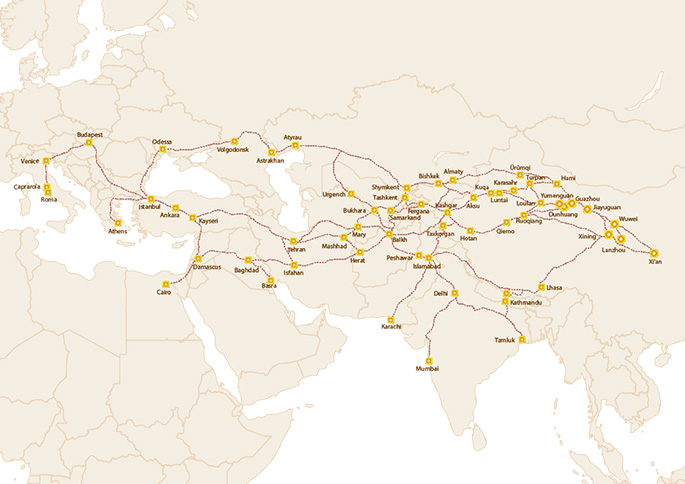The Silk Road (Chinese: 丝绸之路), first popularized by the German geographer Ferdinand von Richthofen in 1877, refers to a network of trade routes that stretched from central China to the Pamir, through central Asia and Arabia to India and Rome. The Silk Road was active from the 2nd century BC until the mid-15th century AD.
Spanning more than 6,400 kilometers across Eurasia, the Silk Road played a key role in facilitating exchanges in economy, culture, politics, and religions between East and West. The central part of the Silk Road, located in Arid Central Asia, is highly sensitive to environmental changes. The oasis routes have been active for 4000 years though precursors of the Silk Road date back nearly 5000 years and extended to the northern steppes of Central Eurasia. Early trans-Eurasia exchanges and the historical Silk Road reshaped the development of civilizations in Eurasia.
